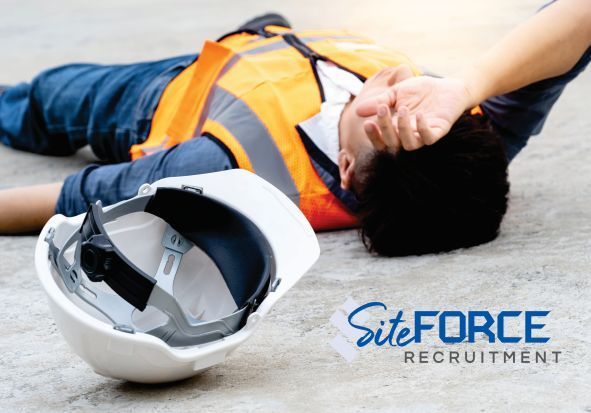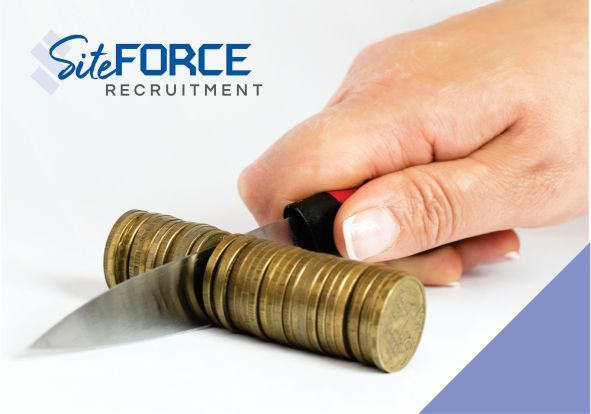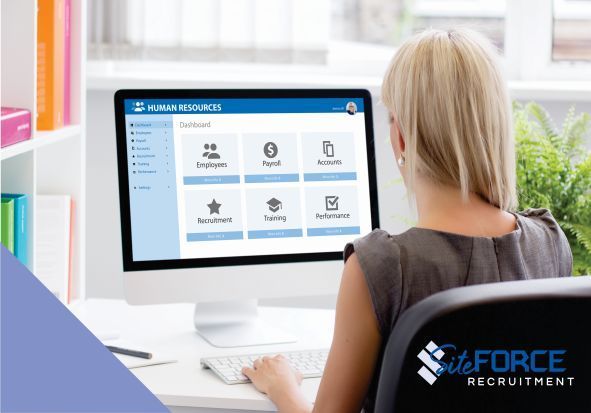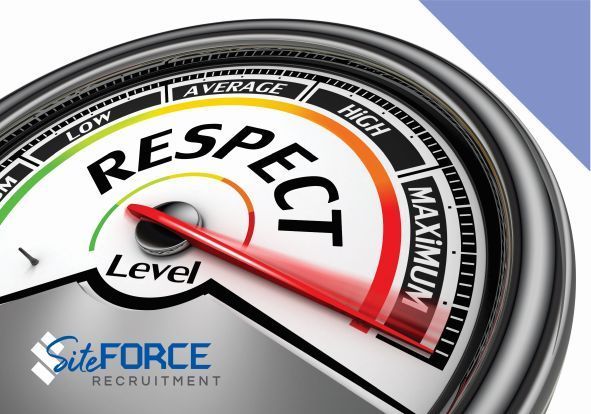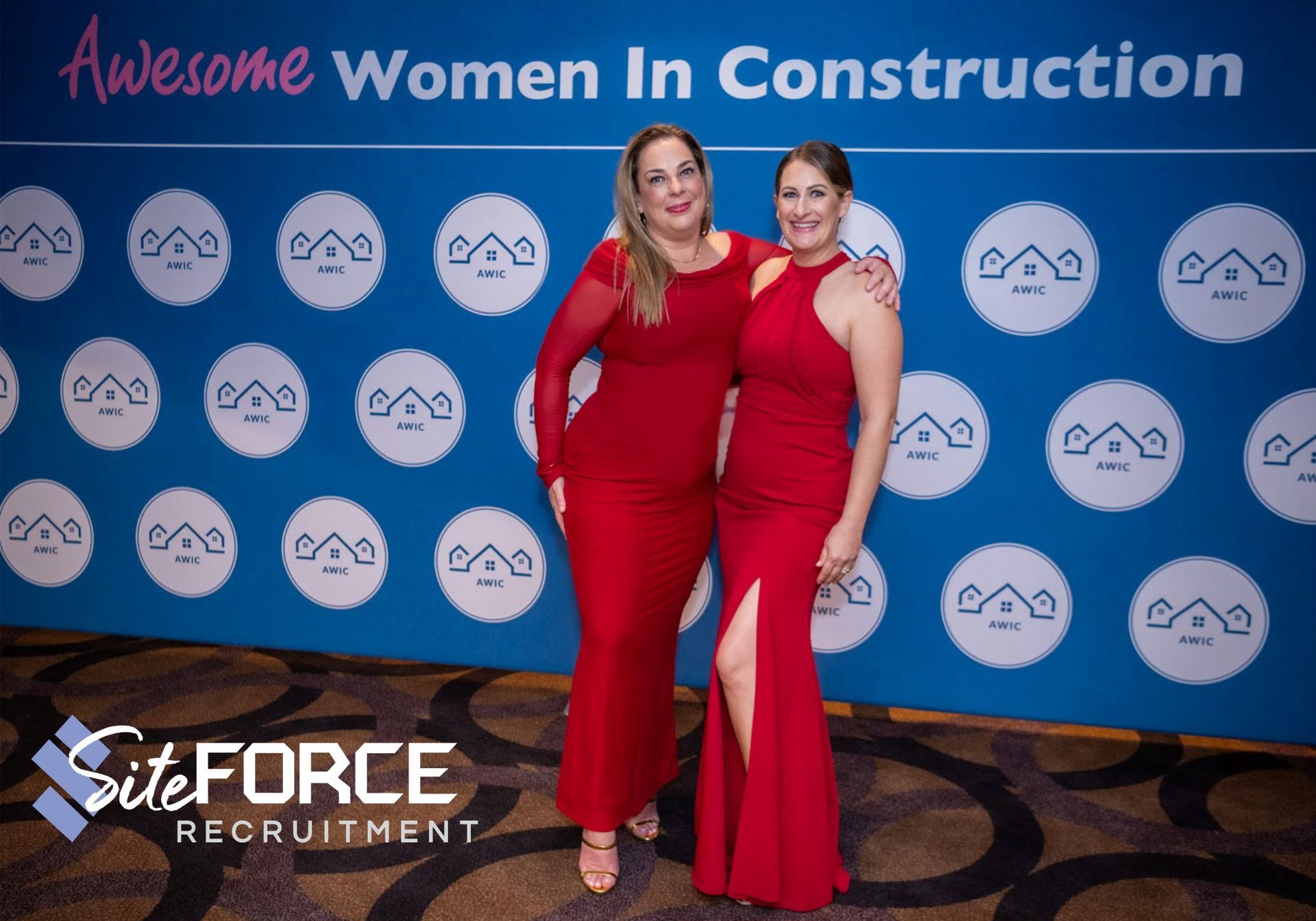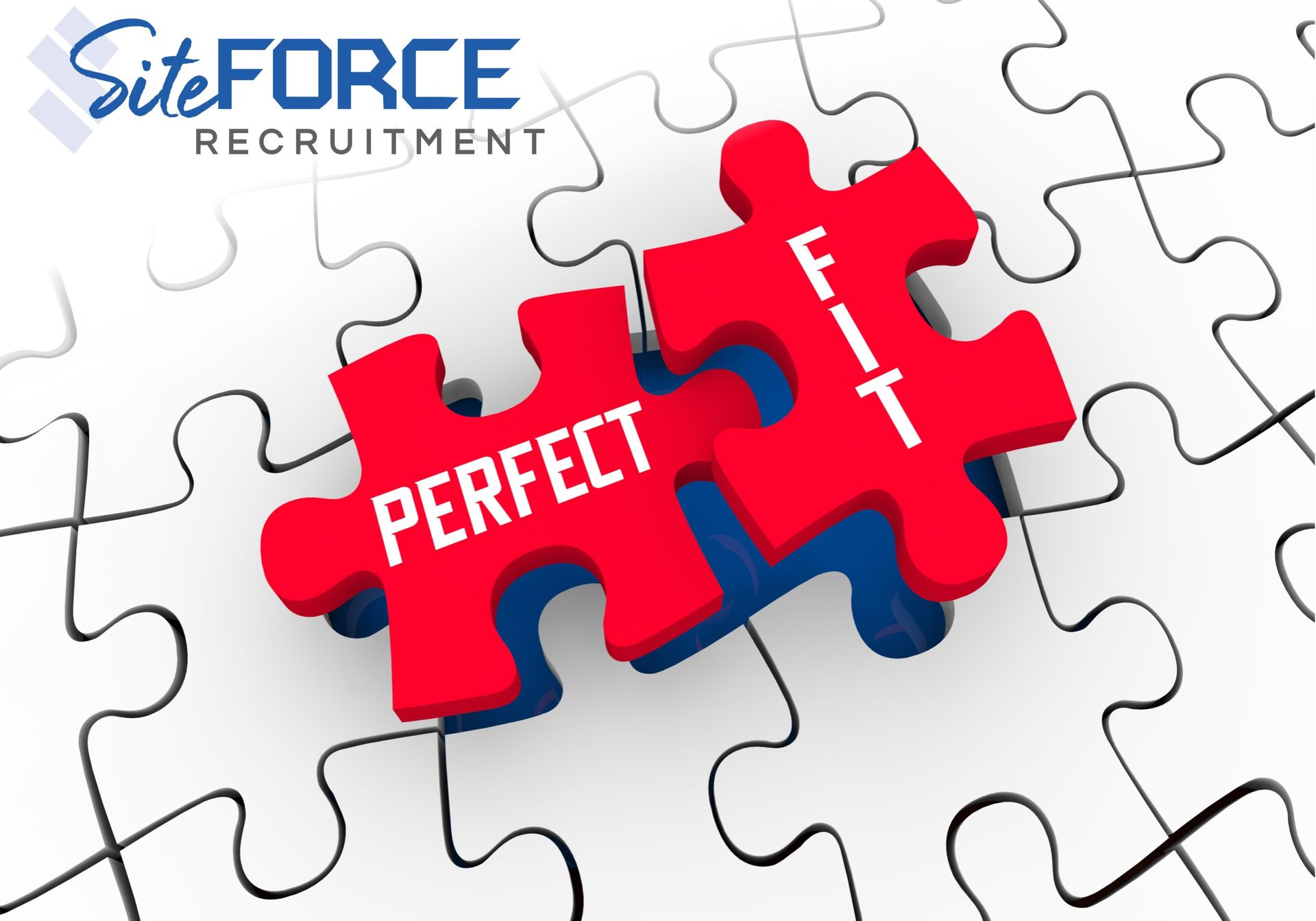Silence No More – Dismantling Sexual Harassment
‘Positive Duty’ obligations effective 12/12/2023
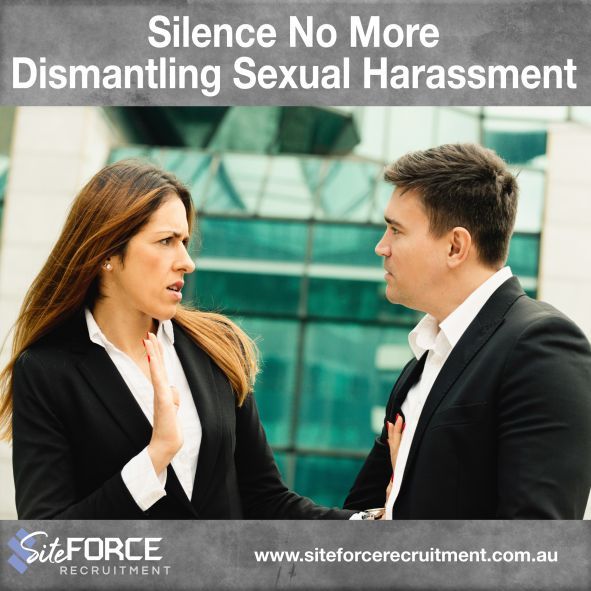
Did you know in the construction and building industry, 51% of women have experienced sexual harassment at work?
In a recent landmark sexual harassment case decision, and just prior to the December 12th ‘positive duties obligations commencement’, a Federal Court has granted a former production manager more than $268,000 in damages.
This case highlights an employer’s positive duty obligations which came into effect on 12/12/2023 to take all reasonable and proportionate measures to eliminate unlawful sex discrimination and sexual and sex-based harassment in the workplace.
As a woman in the construction and building industry, I’ve witnessed a lot – for both men and women - and also the damage and fallout in this area. It is getting better, but we still have a long way to go, and with the release of the new legislation ‘Managing the risk of psychosocial hazards at work Code of Practice’ we have a new set of legislation and codes of practice that include sexual harassment as a part of our health and safety duties.
There are a number of other laws in Australia which deal with sexual harassment that all work together to address sexual harassment to create a safer, healthier, more respectful and productive workplaces. The limited understanding of what constitutes sexual harassment has serious ramifications for employers and staff and this article is to help clear misunderstandings and confusion about obligations and responsibilities.
Sexual harassment is a significant issue in Australia workplaces that affects people across all levels and industries, and in general across all industries, two in five women and one in four men have experienced sexual harassment in the workplace in the past five years.
In the Australian construction industry however, the figures appear worse for women as stated above, and as an industry, we really need to bring more respect into the workplace – for everyone! Women on construction sites are subjected to sexually explicit slurs, offensive graffiti, and the odd suggestive comment. Building and construction is also the most male dominated industry in Australia, with only 12% of the workforce as female. The gender imbalances increase the risk of sexual harassment.
Safe Work Australia state that “sexual harassment is a workplace hazard that is known to cause psychological and physical harm, and managing the risk of sexual harassment should be part of your approach to work health and safety”.
Harassment in the workplace has long been brushed under or ignored due to is complicated nature and circumstances, but things are changing, and the industry and those that work in it, also need to change. The nature of our industry and the changing of dynamics between staff (e.g. women bosses or employers), and a high degree of informality in the industry can increase the risk of sexual harassment. It also increases the potential of informal and personal interactions, physical contact, and other forms of communication which lead to unwanted advances. A lot of trade businesses lack the manpower, knowledge, and resources to handle correct procedures and complaints.
Sexual harassment is not always obvious, repeated or continuous. Unlike bullying, which is characterised by repeated behaviour, sexual harassment can be a one-off incident. Sexual harassment can also be a behaviour that while not directed at a particular person, affects someone who is exposed to it or witnesses it (such as overhearing a conversation or seeing sexually explicit posters in the workplace).
Factors that can increase the likelihood of a worker experiencing sexual harassment or unwelcome sexual behaviour include:
Who:
It also found that factors which may increase the likelihood of a worker experiencing sexual harassment include:
- workers under 30 years of age
- workers who identify as lesbian, gay, bisexual, transgender, intersex, queer or asexual (LGBTIQA+)
- Aboriginal or Torres Strait Islander workers
- workers with a disability
- workers from culturally and linguistically diverse backgrounds
- migrant workers or workers holding temporary visas, and
- people in insecure working arrangements e.g. casual, labour hire or part-time work
Where:
Under WHS laws, a ‘workplace’ means a place where work is carried out for a business or undertaking and includes any place where a worker goes, or is likely to be, while at work. This means sexual harassment can happen:
- at a worker’s usual workplace
- where a worker is working remotely, including if the person’s workplace is their home
- in a place where the worker is undertaking work at a different location (such as a client’s home)
- where the worker is engaging in a work-related activity such as conferences, training, work trips, work-related corporate events of if you host a work-related social activity like a Christmas party, or
- by phone, email or online (such as through social media platforms).
What:
Sexual harassment can be overt, covert or subtle and include:
- unwelcome touching, hugging, cornering or kissing
- inappropriate staring or leering
- suggestive comments or jokes
- using suggestive or sexualised nicknames for co-workers
- sexually explicit pictures, posters or gifts
- circulating sexually explicit material
- persistent unwanted invitations to go out on dates
- requests or pressure for sex
- intrusive questions or comments about a person's private life or body
- unnecessary familiarity, such as deliberately brushing up against a person
- insults or taunts based on sex
- sexual gestures or indecent exposure
- following, watching or loitering nearby another person
- sexually explicit or indecent physical contact
- sexually explicit or indecent emails, phone calls, text messages or online interactions
- repeated or inappropriate advances online
- threatening to share intimate images or film without consent, and
- actual or attempted rape or sexual assault.
Acts such as indecent exposure, stalking, sexual assault and obscene or threatening communications (e.g. phone calls, letters, emails, text messages and posts on social media) may be offences under criminal law and should be referred to Police as well as managed under WHS laws.
The impact of sexual harassment:
Sexual harassment can cause physical and psychological harm to the person it is directed at and anyone witnessing the behaviour. The severity of the impact of sexual harassment can vary. These impacts can have significant social and economic costs for workers, their family, their organisation and the wider community.
Sexual harassment can lead to:
- feelings of isolation, social isolation or family dislocation
- loss of confidence and withdrawal
- physical injuries as a result of assault
- stress, depression, anxiety and post-traumatic stress disorder (PTSD)
- illness such as cardiovascular disease, musculoskeletal disorders, immune deficiency and gastrointestinal disorders e.g. as a result of stress
- negative impacts on a person’s job or career, and
- suicidal thoughts.
Risk Factors:
Factors that can increase the likelihood and risks of sexual harassment include:
- low worker diversity e.g. the workforce is dominated by one gender, age group, race or culture
- power imbalances e.g. workplaces where one gender holds most of the management and decision-making positions
- workplaces organised according to a hierarchical structure e.g. Police and enforcement organisations, or medical and legal professions
- a workplace culture that supports or tolerates sexual harassment, including where lower level (but still harmful) forms of harassment are accepted e.g. small acts of disrespect and inequality are ignored and reports of sexual harassment or inappropriate behaviours are not taken seriously - this conduct can escalate to other forms of harassment, aggression and violence
- use of alcohol in a work context, and attendance at conferences and social events as part of work duties, including overnight travel
- workers are isolated, in restrictive spaces like cars, working at residential premises, living in employer provided accommodation, working from remote locations with limited supervision, or have restricted access to help and support
- working from home which may provide an opportunity for covert sexual harassment to occur online or through phone communication
- worker interactions with clients, customers or members of the public (either face-to-face or online) which may give rise to third-party sexual harassment, and
- poor understanding among workplace leaders of the nature, drivers and impacts of sexual harassment.
Safe Work Systems and procedure suggestions:
Your health and safety management systems, policies and procedures should be part of the overall sexual harassment prevention strategy. You should consider:
- Implementing sexual harassment workplace policies which set out standards of behaviour and procedures for what a worker should do if they experience or see sexual harassment and how they can report it, including where sexual harassment occurs at a remote location or online. Ensure these procedures are well understood by all workers (e.g. through training, providing policies electronically or on noticeboards) and are implemented consistently across all areas of the business and all levels of worker.
- Providing regular supervision and communication with workers, particularly when workers are at remote locations or working from home.
- Identifying risk factors in the physical environment and security measures.
- Identifying where third-party sexual harassment risks with customers, clients, or members of the public.
- Avoiding sexualised uniforms and ensure clothing is practical for the work undertaken.
- Encouraging workers to keep records and screen shots if inappropriate behaviour occurs online or through phone communication.
- For work-related corporate events, reinforcing workplace policies and what behaviours are expected of workers, ensuring that responsible service of alcohol policies are followed and that workers know who to turn to if they experience or witness inappropriate behaviour at the event.
- Regularly evaluating work systems and practices, in consultation with workers and their representatives, to see if they contribute to circumstances where sexual harassment is more likely to occur.
- Acting in a consistent manner when dealing with reports of sexual harassment, including providing sufficient and appropriate feedback to workers who have raised concerns.
- Collecting de-identified details of all sexual harassment complaints, including those that are not pursued formally by the complainant, to help you identify systemic issues at the workplace.
- Addressing unwanted or offensive behaviour early as an effective way to stop sexual harassment, and encourage the reporting of sexual harassment or behaviour that causes concern.
- Provider workers with information, instruction, training and supervision to support your overall strategy for preventing sexual harassment, including manager and key personnel training.
- Ensure everyone is well informed of the contact officer appointed that they can go to safely and confidentially to discuss or report behaviour that is of concern.
Power imbalances and inequality may increase the risk of sexual harassment, so you may also consider implementing policies and strategies to address gender inequality, lack of diversity and power imbalances.
In some circumstances, workers or their HSRs have the right to refuse to carry out or stop unsafe work. They have this right if there is a reasonable concern that the worker will be exposed to a serious risk to their health and safety from an immediate or imminent hazard.
If a worker stops work because it is unsafe, they need to tell you as soon as possible. The worker must also then be available to carry out suitable alternative work, including doing other tasks that they are trained or able to do, or performing work from another location, such as working from home. In most circumstances, the HSR will need to consult with you before a worker is directed to stop work.
We all have obligations to uphold in this arena:
Everyone at work has a responsibility for health and safety, both physical and psychological. This includes both bosses and workers, and below are some tips to consider:-
1. Officers, such as company directors, must exercise due diligence to ensure the business or undertaking complies with the WHS Act and Regulations. This includes taking reasonable steps to ensure the business or undertaking has and uses appropriate resources and processes to eliminate or minimise risks of sexual harassment.
2. Workers also have duties under WHS laws. Workers must take reasonable care of their own health and safety while at work, and the health and safety of others who may be affected by what they do or do not do. While at work, workers must also comply with any reasonable instructions, policies and procedure given by the PCBU, including policies and procedures to prevent and respond to sexual harassment.
Resources and Support Services:
Fair Work Commission
1300 799 675
Worksafe Queensland
Safe Work Australia
Australian Human Rights Commission
www.humanrights.gov.au
1300 656 419 or 02 9284 9888
Our Watch
Beyond Blue
1300 224 636
1800Respect
1800 737 732
Sexual assault support services
www.humanrights.gov.au/our-work/sex-discrimination/list-sexual-assault-services
Lifeline
13 11 14
ReachOut
Our Superpower
Our leading 'superpower' is attracting and retaining quality team members who share our values of honesty, integrity, diligence, and service, allowing us to deploy quality team members on client sites quickly.
Our team member's superpower is being motivated, prepared and ready to enthusiastically contribute to the projects at hand, more than just a pair of hands.
Related articles:
Read other informative articles for both employers and workers at: https://www.siteforcerecruitment.com.au/blogs
Chantal Penny is the Director with Superpowers of SiteForce Recruitment. A thought leader in the industry, Chantal, based on her expertise and industry perspective, offers unique guidance, inspiration, and influence in the industry. Chantal Penny is also a thought leader in the industry with her Podcast, Talent Instinct, which is available at:
https://talentinstinctpodcast.libsyn.com/site
At SiteForce Recruitment, we specialise in labour-hire and permanent recruitment in the construction industry. We are committed to valuing people, safety and wellbeing, collaboration, trust and, of course – results!
CONNECT with us via our contact page or bookings links on our website if you are looking to recruit for, get your dream job, or join our amazing labour force team.


